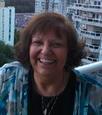1917 was a busy time for the Port of Halifax in Nova Scotia. World War 1 brought prosperity to the city and the harbour was crowded with convoys of ships loaded with war supplies, food, ammunitions and troops. The convoys were preparing for the trip to Europe to be escorted by heavily-armed warships.
Several neutral vessels with their crews aboard were anchored in the harbour. Their crews were not permitted to land for fear they might supply information to the enemy. The extra traffic necessitated new railway lines and terminals and these were almost complete. The city was swollen with troops waiting to sail for Europe, and troops and their families garrisoned in Halifax. The city was a popular hub with plenty of employment.
On December 6 at 7.30am, the French ship Mont-Blanc sailed from her anchorage outside the harbour headed to join a convoy gathering in the Bedford Basin. The ship was loaded with 200 tons of TNT, 2,300 tons of wet and dry picric acid, 10 tons of gun cotton and 35 tons of a highly explosive mixture of liquid called benzol.
At the same time the Norwegian vessel Imo, in ballast, left the Bedford Basin headed to pickup relief supplies for Belgium from the city of New York. After several badly judged manoeuvres, the Imo struck the Mont-Blanc in the bow as they both entered the area of the Halifax Port called the Narrows.
The collision was not severe, but fire immediately broke out on board the Mont-Blanc. Expecting that the ship with all its explosive cargo would blow up quickly the captain, pilot and crew of the Mont-Blanc launched the lifeboats and headed for refuge on the Dartmouth shore.
The sight of this spectacle drew crowds of sightseers to the shores. The Mont-Blanc drifted burning for 20 minutes until it rested against Pier 6, the busy, industrial north end of Halifax in an area known as Richmond. Only a few naval officers and a radio dispatcher were aware of the explosive cargo and the danger. They had no time to warn the unaware sightseers of the upcoming danger.
Just around 9.05 am the Mont-Blanc exploded. The explosion blew fragments crashing through buildings and embedding themselves where they landed, not one piece of the ship remained beside the dock where she ended her voyage.
Everything in its path was destroyed, Churches, houses, schools, factories, docks and ships. Sightseers including children who had stopped on their way to school, workmen, families in their homes, sailors on board their ships, all died instantly. Others were shocked and bewildered with frightful injuries, including blindness from splintering glass.
5 crew members and the captain and pilot of the Imo died, all the crew of the Mont-Blanc with the exception of one who died from his wounds, survived the explosion.
The rescue began quickly with well-disciplined troops, volunteer help and assistance from surrounding cities. Hospitals, shelters, and even several commandeered ships in the harbour quickly became overcrowded, and several injured and homeless were sent to other cities by train.
Help came from all over Canada, and the rest of the world, but Boston, Massachusetts was particularly generous. Every year at Christmas a huge Christmas tree is sent to the city of Boston as a thank you from the people of Nova Scotia.
1,630 homes were completely destroyed, 12,000 houses were damaged, 6,000 people were left homeless, and just about every pane of glass in Halifax and Dartmouth was shattered.
The death toll was more that 1,900 with approx. 250 never identified, and many known victims never found.
The Halifax Relief Commission was quickly appointed, and it handled pensions, loss and damage claims, the re-housing and rehabilitation of victims. It was disbanded in 1976 when the Department of Veterans Affairs took over the pensions.
My name is Avril Betts, I have over 25 years experience in all aspects of Travel and Tourism. I hold a CHA (Certified Hotel Administrator). Along with my partner Khaled Azzam we own A-Z Tours and Action Travel in North America along with Travelocity Travel Egypt in Cairo, Egypt.
I have co-chaired Atlantic Canada Showcase an International Travel Trade Show, managed 450 volunteers for the Tall Ships Visit in July 2000, and was awarded Entrepreneur of the Year by the Tourism Industry Association of Nova Scotia. In 1996 I hosted the president’s wives luncheon for the G7 conference. In 1988 I founded the Country Inn Association in Nova Scotia.
As an experienced speaker I have presented seminars for many years on subjects ranging from Marketing and Sales and Life Skills to Tourism, Travel and Real Estate, and operating an online Travel business.
I enjoy working with tourists to pass on my knowledge to help our clients make the most of their vacations. Don’t hesitate to contact me with any questions or travel inquiries.
For more information and tours to Nova Scotia check out
http://www.novascotiatravel.ca
http://www.a-ztours.com
avril@a-ztours.com

Post new comment
Please Register or Login to post new comment.